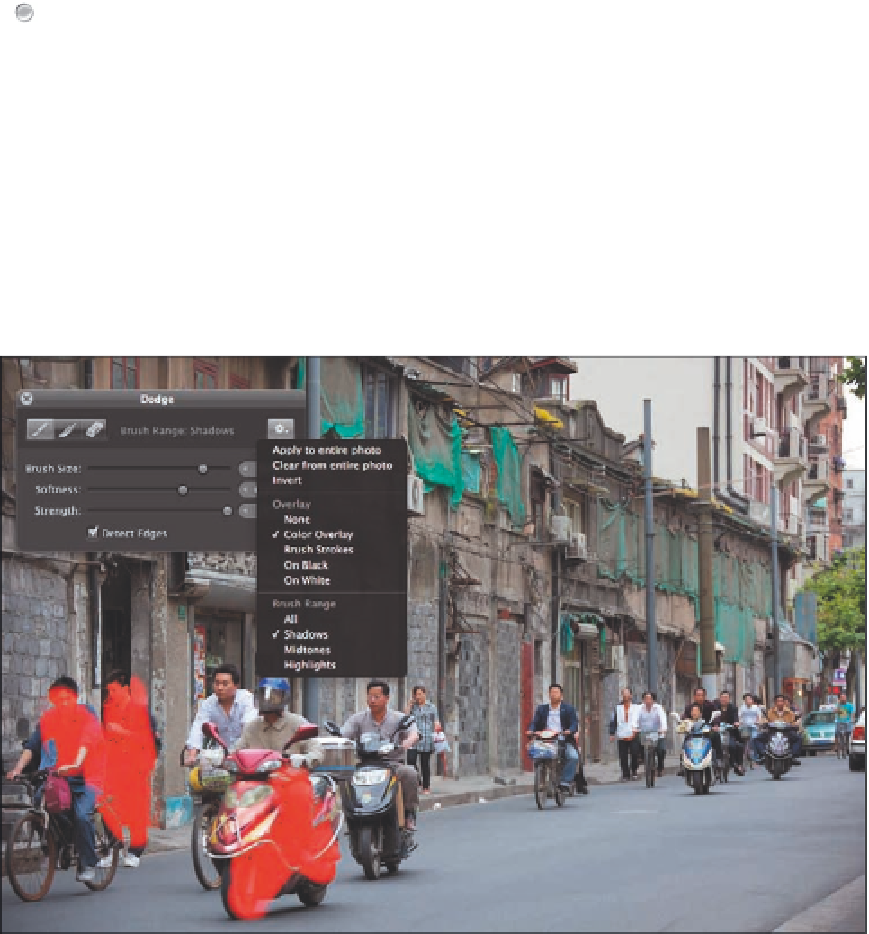Graphics Programs Reference
In-Depth Information
Strength slider determines how strongly the affect is applied.
Because you can
reduce the strength of most of the Quick Brushes in the associated brick in the
Adjustments Inspector after the fact, you could opt to apply the effect at full strength.
However, if you start to brush in the effect and it's clearly too strong, it makes sense to
reduce the strength of the brush initially. Keep in mind that you can set the strength at
one setting for one stroke and at a different setting for the next stroke. That way you can
work precisely and get exactly the results that best suit your image.
Detect Edges
causes Aperture to automatically constrain your brushstrokes to areas
similar to where you initially begin the brushstroke. That way the effect doesn't acciden-
tally seep into adjacent areas of the image. We use this option a lot and find it helps us to
work more efficiently.
Use the Action pop-up menu in the upper right of the dialog to access additional controls includ-
ing the options to see the brushstrokes. This is helpful when you make subtle adjustments that are
difficult to see on the image. Taking the time to use the overlays, as shown in Figure 6.40, means
you won't accidentally forget to include an area. Which overlay you use depends in part on per-
sonal preference and on the effect you're using.
6.40
Take advantage of the overlays to see precisely where you've applied a Quick Brush.


















